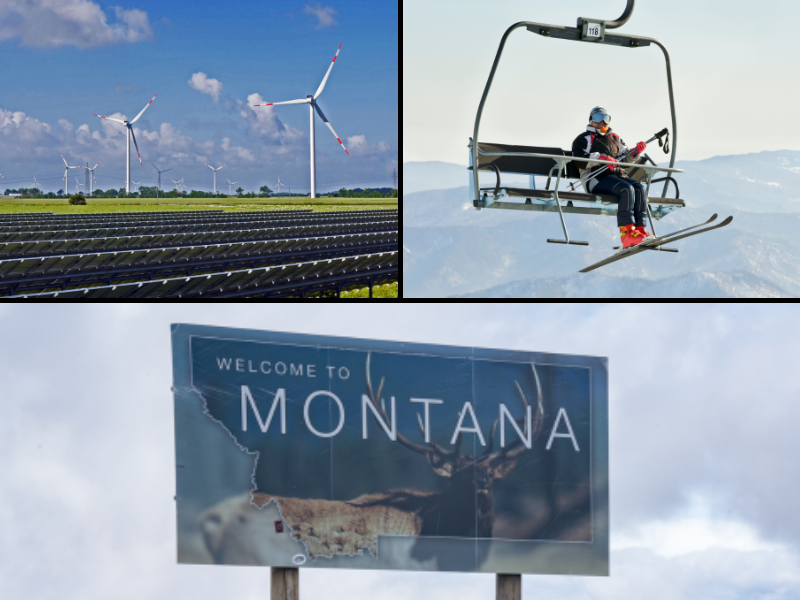Researchers at the University of Texas-Arlington’s Collaborative Laboratories for Environmental Analysis and Remediation have conducted a study on ambient emissions at hydraulic fracturing sites in the Eagle Ford shale in Southwest Texas and found these emissions to be within the acceptable federal standard.
Published in August 2016 in the journal Science of the Total Environment, the study, titled “Point Source Attribution of Ambient Contamination Events Near Unconventional Oil and Gas Development,” examined ambient benzene, toluene, ethyl benzene, and xylene (BTEX)—volatile organic compounds that can be carcinogenic and can affect the central nervous system—at fracking sites in 13 different counties using over 12,800 mass spectrometry measurements.
While these BTEX compounds did register around fracking sites, their concentrations were very small. Toluene and xylene levels were 40 times and 100 times below Occupation Health and Safety Administration (OSHA) and U.S. National Institute for Occupational Safety and Health (NIOSH) limits, respectively. OSHA also recommends benzene levels lower than 1,000 parts-per-billion (ppb) over an eight-hour period, and none of the tested pads saw concentrations that high.
“Toluene was found to be the most prevalent air contaminant,” the authors wrote, “though ambient toluene concentrations did not exceed 5000 ppb, which is well below the OSHA [permissible exposure limit] and NIOSH, [the recommended exposure limit]. Similarly, total ambient xylene isomer concentrations did not exceed the NIOSH air quality standard of 100,000 ppb on any of the six pad sites; they were measured to reach a maximum concentration of 1000 ppb.”
What’s more, the authors found these emissions are not the result of the fracking process itself; they emanate from various onsite activities carried out poorly and inefficiently.
“These variable contamination events, attributable in many cases to specific natural gas flaring units, condensation tanks, compressor units and hydrogen sulfide scavengers, indicate that mechanical inefficiencies, and not the inherent nature of the extraction process as a whole, result in the release of these compounds into the environment … These results therefore suggest that air contamination events from fracking can be monitored, controlled and reduced.”
There is no scientific justification for banning hydraulic fracturing, commonly called “fracking,” or over-regulating it out of existence. The fracking process has transformed the energy outlook of the United States over the past decade, and the rise of shale gas as a replacement for coal has been primarily responsible for the United States now enjoying its lowest level of carbon-dioxide emissions since 1989.
Drilling is currently being conducted in Texas in a safe and responsible manner, and it has transformed the energy outlook of the Lone Star State for the better. As my colleague Isaac Orr has stated, “Hydraulic fracturing and the shale gas boom have provided the United States a cost-effective, clean, and abundant source of fuel that will stimulate economic growth while reducing greenhouse-gas emissions in a practical and significant way.”
The following documents provide more information about hydraulic fracturing.
Research & Commentary: Texas Earthquakes and Hydraulic Fracturing
https://heartland.org/publications-resources/publications/research–commentary-texas-earthquakes-and-hydraulic-fracturing?source=policybot
In this Research & Commentary, Heartland Institute Policy Analyst Tim Benson writes about a 2016 joint study conducted by researchers at the University of Texas-Austin and Southern Methodist University that claims 87 percent of all earthquakes in the Lone Star State from 1975 to 2015 were “possibly” caused by “petroleum production.” Benson says using the term “earthquake” to refer to the minor seismic activity produced by the overwhelming number of injection wells, although technically correct, is misleading. Most of these so-called earthquakes cannot even be felt by people and sensible precautions can be taken to lessen the risk of increased seismicity. In many cases, Benson notes, these precautions are already being taken by drillers without any government mandates.
Hydraulic Fracturing a Game-Changer for U.S. Energy and Economies
https://heartland.org/publications-resources/publications/hydraulic-fracturing-a-game-changer-for-us-energy-and-economies?source=policybot
In this Policy Study from The Heartland Institute, Heartland Research Fellow Isaac Orr explains the advantages and disadvantages of smart drilling and its alternatives. Orr reviews the background and potential of hydraulic fracturing in the United States and puts that potential in the context of the supply of and demand for oil and gas. He addresses the environmental impacts of hydraulic fracturing, both positive and negative, as well as the public safety issues raised by activists, such as potential harm to drinking water supplies. Orr also discusses how oil and gas production is regulated at the state and national levels and suggests appropriate policies for the industry.
Fracking Facts: The Science, Economics, and Legal Realities
https://heartland.org/publications-resources/publications/fracking-facts-the-science-economics-and-legal-realities?source=policybot
Hydraulic fracturing, commonly known as fracking, has been employed in the United States since the 1940s. Although innovation has improved the precision of the process, the essentials are the same. Utilizing horizontal drilling, a mixture of mostly water, sand, and trace amounts of chemicals, are used to create fissures in underground shale deposits to allow oil and natural gas trapped in hard rock to move toward the surface to be collected. Activists have blamed fracking and the processes associated with it for emissions of pollutants, earthquakes, and even groundwater contamination, though independent evidence consistently shows these allegations to be false. Leigh Thompson of the Texas Public Policy Foundation argues the evidence supporting fracking bans looks slim when attention is drawn to the facts.
Managing the Risk of Hydraulic Fracturing: An Update
https://heartland.org/publications-resources/publications/managing-the-risks–of-hydraulic-fracturing-an-update?source=policybot
Kenneth P. Green of the Fraser Institute argues policymakers should ignore the siren song made by those calling for moratoria or bans on fracking.
Hydraulic Fracturing: Critical for Energy Production, Jobs, and Economic Growth
https://heartland.org/publications-resources/publications/hydraulic-fracturing-critical-for-energy-production-jobs-and-economic-growth?source=policybot
Increased energy production on private lands in the United States has been one of the most promising economic success stories in recent years. A large part of the success is due to an energy-extraction process known as hydraulic fracturing. Misconceptions about hydraulic fracturing, also called fracking, abound. The Heritage Foundation’s Nicolas Loris explains hydraulic fracturing is safe when regulated effectively and says fracking greatly increases the nation’s energy production, thus promoting job creation.
Assessment of the Potential Impacts of Hydraulic Fracturing for Oil and Gas on Drinking Water Resources
https://heartland.org/publications-resources/publications/assessment-of-the-potential-impacts-of-hydraulic-fracturing-for-oil-and-gas-on-drinking-water-resources
This assessment from the Environmental Protection Agency provides a review and synthesis of available scientific literature and data to assess the potential impact hydraulic fracturing may have on the quality or quantity of drinking water resources, and it identifies factors affecting the frequency or severity of any potential impacts. The scope of this assessment is defined by the hydraulic fracturing water cycle, which includes five main activities: water acquisition, chemical mixing, well injection, flowback and produced water, and wastewater treatment and waste disposal.
Nothing in this Research & Commentary is intended to influence the passage of legislation, and it does not necessarily represent the views of The Heartland Institute. For further information on this and other topics, visit the website of Environment & Climate News at https://heartland.org/publications-resources/newsletters/environment-climate-news, The Heartland Institute’s website at https://heartland.org, and PolicyBot, Heartland’s free online research database at https://heartland.org/policybot/index.html.
The Heartland Institute can send an expert to your state to testify or brief your caucus; host an event in your state; or send you further information on a topic. Please don’t hesitate to contact us if we can be of assistance! If you have any questions or comments, contact John Nothdurft, Heartland’s director of government relations, at [email protected] or 312/377-4000.




